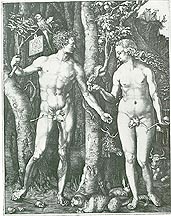
|

|
Any discussion of the art of Albrecht Dürer needs to focus on his conception of the human figure. To gain perspective on the transformation of the conception of the human figure in his art, compare Dürer's representation of Adam and Eve to the painting of the same subject matter by Hugo van der Goes of about 1470:
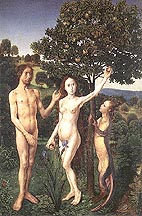
Hugo's representation is clearly based on the tradition of the figure in northern art. Compare Hugo's representation of Adam to Jan van Eyck's Adam from the Ghent Altarpiece:
Also compare Dürer's image of Adam and Eve to a late fifteenth century engraving by Master PM:
The figures in Dürer's image can be traced back to figures from Greek Late Classical art. For example, Dürer's Adam can be compared with the famous late fourth century statue entitled the Apollo Belvedere:
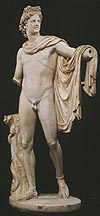
Dürer's awareness of this image is demonstrated by a drawing he did of Apollo in 1500:
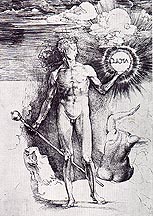
Compare Dürer's Eve to the following copies of Late Classical representations of Aphrodite:
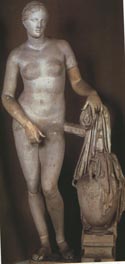
|
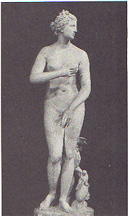
|
The two nudes below witness the dramatic transformation in the conception of the human figure in Dürer's art between the 1490's and the first decade of the 16th century:
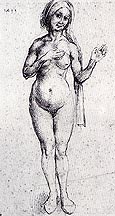
|
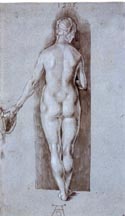
|
This transformation in the conception of the human figure was greatly influenced by Dürer's study of Italian art as exemplified by Dürer's drawing of the Battle of the Seagods of 1494 which is based on Andrea Mantegna's engraving of the same subject:
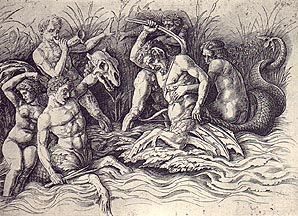
|
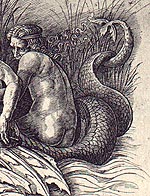
|
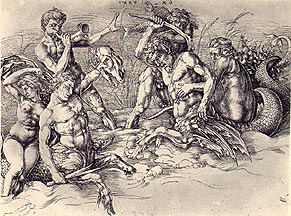
|
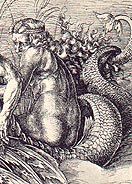
|
Comparison of the details of the two images brings out the greater complexity of Dürer's modelling and how he achieved the sense of texture in the figures.
Michelangelo, Temptation and Expulsion of Adam and Eve, from the Sistine Ceiling, 1508-12.